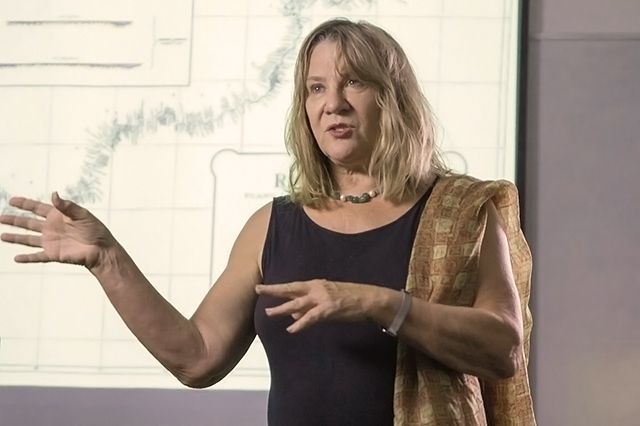Feb 24 2016
For Susanna Hecht, the future of life on this planet as we know it is a matter of degrees — a scant few at that.
 Professor Susanna Hecht.Credits: Roberto Gudino/UCLA
Professor Susanna Hecht.Credits: Roberto Gudino/UCLA
Hecht, an urban planning professor at the UCLA Luskin School of Public Affairs whose research focuses on political ecology, is part of a group of 50 University of California scholars and scientists addressing the 10-campus Carbon Neutrality Initiative proposed by UC President Janet Napolitano in 2013. Under this initiative, the University of California commits to emitting net zero greenhouse gases from its buildings and vehicle fleet by 2025. Recent California legislation also calls for a marked increase in the amount of renewable resources providing electricity in the state by 2030.
Hecht and her UC colleagues, led by renowned climate scientist Veerabhadran Ramanathan from UC San Diego’s Scripps Institution of Oceanography, are among those who want to “bend the curve” — or the “hockey stick” graph, as Hecht refers to it — on the rise in global temperatures caused by greenhouse gases. A mere two-degree change in average temperature will portend future disaster — from drought to sea-level rise — and will change weather patterns that most of the globe is not prepared for, according to experts representing a wide range of disciplines.
Hecht said, “We are already in the middle of this … and a lot of records are being broken on a weekly basis.”
The group of scholars, from fields as diverse as ethics and environmental justice to climate science and religion, met in October at UC’s Summit on Pathways to Carbon and Climate Neutrality: California and the World, led by California Gov. Jerry Brown. The purpose of the meeting was to focus on solutions that could guide the state and also to provide solutions that could be used worldwide. UC research and recommendations were also part of the 2015 United Nations Climate Change Conference held in Paris.
In addition to carbon — which has a long life in the atmosphere — Hecht points out the many other factors that contribute to temperature rise, such as methane and hydrofluorocarbons (HFCs) released into the environment, as well as the “heat island” effect our built environment, roads and urban centers create.
The tropical rainforest, as a “carbon sink,” absorbs millions of tons of carbon from the atmosphere, and Hecht points out that deforestation of the Amazon has dropped significantly in the last decade. This has had an impact, but the rainforest can’t do it alone, especially when deforestation continues in other parts of the world such as Indonesia.
Change will require not only scientific innovation but also social innovation that focuses on our relationship with forests, said Hecht, who is the co-editor of “The Social Lives of Forests: Present and Future of Woodland Resurgence” (Oxford University Press, 2014).